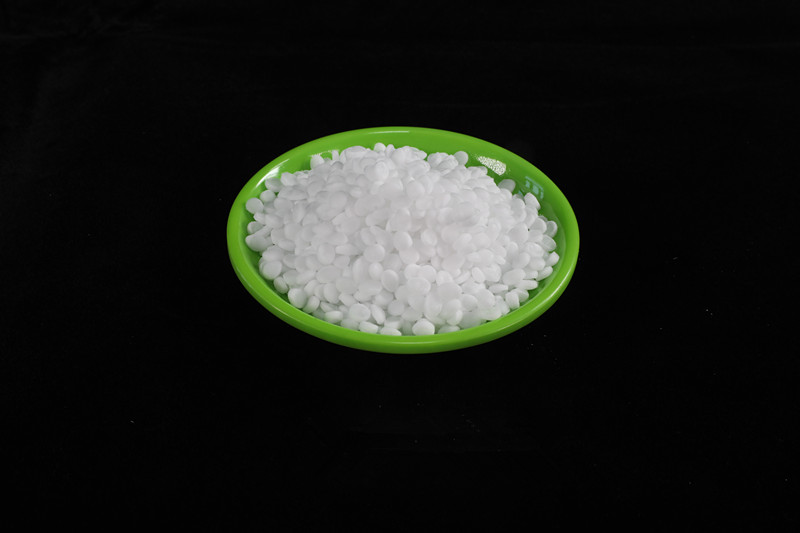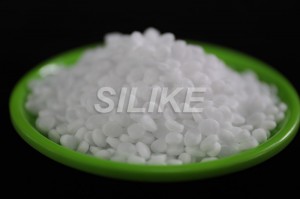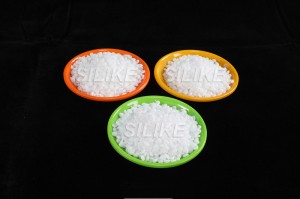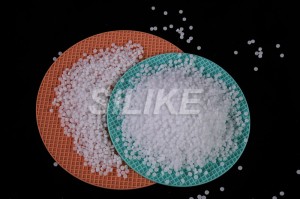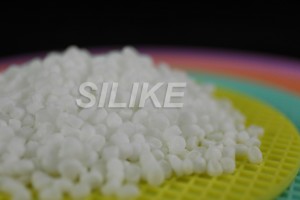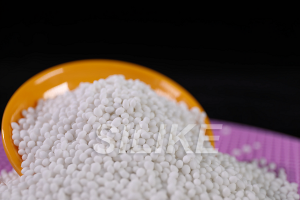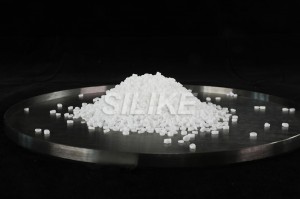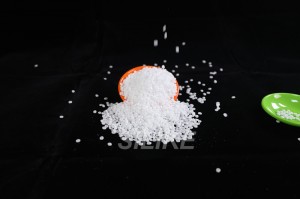What processing aids are the best choice for HFFR wire&cable compounds?
What processing aids are the best choice for HFFR wire&cable compounds?,
Silicone Additives, Silike Silicone additives, SILIKE silicone Additives Solutions for NHFR Wire & Cable Compounds, Silike Silicone masterbatch, Solutions for HFFR Wire & Cable Compounds, Solutions for LSZH Wire & Cable Compounds,
Description
Silicone Masterbatch ( Siloxane Masterbatch ) LYSI-401 is a pelletized formulation with 50% ultra high molecular weight siloxane polymer dispersed in low density polyethylene (LDPE ). It is widely used as an efficient processing additive in PE compatible resin system to improve the processing properties and modify surface quality.
Compare to conventional lower molecular weight Silicone / Siloxane additives,like Silicone oil, silicone fluids or other type processing aids, SILIKE Silicone Masterbatch LYSI series are expected to give improved benefits, eg,. Less screw slippage , improved mold release, reduce die drool, a lower coefficient of friction, fewer paint and printing problems, and a broader range of performance capabilities.
Fundamental Parameters
|
Grade |
LYSI-401 |
|
Appearance |
White pellet |
|
Silicone content % |
50 |
|
Resin base |
LDPE |
|
Melt index ( 230℃, 2.16KG ) g/10min |
12 ( typical value ) |
|
Dosage% (w/w) |
0.5~5 |
Benefits
(1) Improve processing properties including better flow ability , reduced extrusion die drool , less extruder torque , better molding filling & release
(2) Improve surface quality like surface slip, lower Coefficient of friction
(3) Greater abrasion & scratch resistance
(4) Faster throughput , reduce product defect rate.
(5) Enhance stability compare with traditional processing aid or lubricants
….
Applications
(1) HFFR / LSZH cable compounds
(2) XLPE cable compounds
(3) Telecommunication pipe , HDPE microduct
(4) PE plastic film
(5) TPE/TPV compounds
(6) Other PE compatible systems
…………..
How to use
SILIKE LYSI series silicone masterbatch may be processed in the same way as the resin carrier on which they based. It can be used in classical melt blending process like Single /Twin screw extruder, injection molding. A physical blend with virgin polymer pellets is recommended .
Recommend dosage
When added to polyethylene or similar thermoplastic at 0.2 to 1% , improved processing and flow of the resin is expected, including better mold filling, less extruder torque, internal lubricants, mold release and faster throughput; At a higher addition level , 2~5%, improved surface properties are expected, including lubricity , slip, lower coefficient of friction and greater mar/scratch and abrasion resistance
Package
25Kg / bag , craft paper bag
Storage
Transport as non-hazardous chemical. Store in a cool , well ventilated place .
Shelf life
Original characteristics remain intact for 24 months from the production date , if kept in recommend storage.
Chengdu Silike Technology Co., Ltd is a manufacturer and supplier of silicone material, who has dedicated to R&D of the combination of Silicone with thermoplastics for 20+ years, products including but not limited to Silicone masterbatch , Silicone powder, Anti-scratch masterbatch, Super-slip Masterbatch, Anti-abrasion masterbatch, Anti-Squeaking masterbatch, Silicone wax and Silicone-Thermoplastic Vulcanizate(Si-TPV), for more details and test data, please feel free to contact Ms.Amy Wang Email: amy.wang@silike.cnProcessing aids are an important part of the production of HFFR (Halogen Free Flame Retardant) wire and cable compounds. They are used to improve the flowability and processability of the compound, as well as to reduce the amount of energy required for extrusion. In this article, we will discuss the different types of processing aids available for HFFR compounds, their benefits, and how they can be used to improve production efficiency.
Processing aids can be divided into two main categories: organic and inorganic. Organic processing aids are typically polymers or waxes that are added to the compound to improve its flowability and reduce its viscosity. These materials can also help reduce die build-up during extrusion, which can lead to improved product quality. Inorganic processing aids include silicates, carbonates, and phosphates that are added to increase the thermal stability of the compound during extrusion. These materials also help reduce die build-up and improve product quality.
The benefits of using processing aids in HFFR compounds include improved processability, reduced energy consumption during extrusion, improved product quality, and increased production efficiency. Additionally, using processing aids can help reduce costs associated with raw material purchases since they allow for a lower concentration of active ingredients in the compound.
When selecting a processing aid for HFFR compounds it is important to consider factors such as compatibility with other ingredients in the compound, cost effectiveness, thermal stability during extrusion, and environmental impact. Additionally, it is important to consider how much energy is required for extrusion when selecting a processing aid since this will affect both cost and product quality.
FREE SILICONE ADDITIVES AND Si-TPV SAMPLES MORE THAN 100 GRADES

Sample type
$0
- 50+
grades Silicone Masterbatch
- 10+
grades Silicone Powder
- 10+
grades Anti-scratch Masterbatch
- 10+
grades Anti-abrasion Masterbatch
- 10+
grades Si-TPV
- 8+
grades Silicone Wax
-

Phone
-

E-mail
-

WeChat
-

Top
- English
- Chinese
- French
- German
- Portuguese
- Spanish
- Russian
- Japanese
- Korean
- Arabic
- Irish
- Greek
- Turkish
- Italian
- Danish
- Romanian
- Indonesian
- Czech
- Afrikaans
- Swedish
- Polish
- Basque
- Catalan
- Esperanto
- Hindi
- Lao
- Albanian
- Amharic
- Armenian
- Azerbaijani
- Belarusian
- Bengali
- Bosnian
- Bulgarian
- Cebuano
- Chichewa
- Corsican
- Croatian
- Dutch
- Estonian
- Filipino
- Finnish
- Frisian
- Galician
- Georgian
- Gujarati
- Haitian
- Hausa
- Hawaiian
- Hebrew
- Hmong
- Hungarian
- Icelandic
- Igbo
- Javanese
- Kannada
- Kazakh
- Khmer
- Kurdish
- Kyrgyz
- Latin
- Latvian
- Lithuanian
- Luxembou..
- Macedonian
- Malagasy
- Malay
- Malayalam
- Maltese
- Maori
- Marathi
- Mongolian
- Burmese
- Nepali
- Norwegian
- Pashto
- Persian
- Punjabi
- Serbian
- Sesotho
- Sinhala
- Slovak
- Slovenian
- Somali
- Samoan
- Scots Gaelic
- Shona
- Sindhi
- Sundanese
- Swahili
- Tajik
- Tamil
- Telugu
- Thai
- Ukrainian
- Urdu
- Uzbek
- Vietnamese
- Welsh
- Xhosa
- Yiddish
- Yoruba
- Zulu
- Kinyarwanda
- Tatar
- Oriya
- Turkmen
- Uyghur

